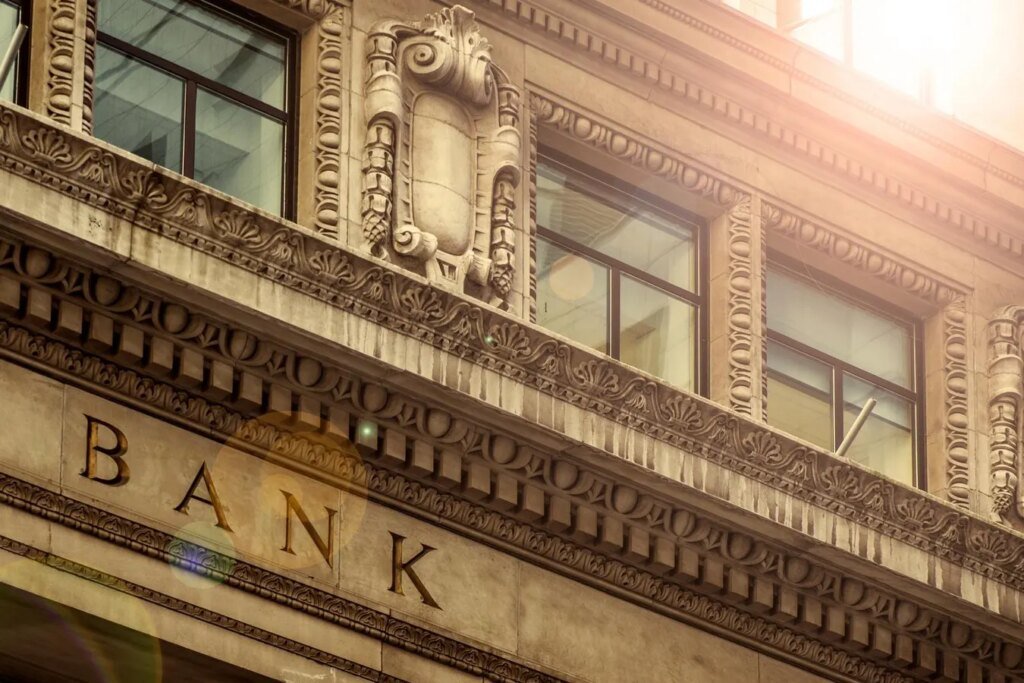classic architecture details of a Bank building
getty
Don’t look now, but the finance industry has just found another reason to be wary of AI.
Remember the old wisdom that seasoned traders would bestow in aphorisms like “go up and down staircase,” and “buy low, sell high”? It’s basically the idea that by betting against the herd, a savvy maverick can unlock huge potential gains. That’s often true – markets value according to general investor sentiment, so bucking against the norm can make you rich. But at a broader level, it’s also true that diverse markets work better. If there’s a 100% consensus on one side of a bet – well then, there’s no bet.
So when experts talk about “market crowding,” smart people pay attention.
What is market crowding? It’s simple: market crowding happens when all or nearly all of the players in a market take the same position. And why would they do that? Prior to AI, it might be hard to imagine. Investors would crowd together in the exact same positions, in, for example, an options market, simply because AI told them to.
Again, something like this can collapse a market. You wouldn’t go to a casino and place bets on a roulette wheel if the outcome was already accurately predicted by an algorithm. In an options market, if absolutely everyone was buying the option for a particular price spike at a certain time, why would you go in and bet against that?
But this kind of outcome is not unimaginable if traders increasingly play “money see, monkey do” with LLMs. Of course, hedge funds have hedges, but would that shore up a large consensus in a trading community? And would the whole thing sort of resemble the now-classic “AMC Apes” movement, with Gamestop and everything else?
Making Suggestions for AI in Finance
At a recent event at Stanford, Richard Rothenberg of the Global Algorithmic Institute interviewed AI Finance Institute founder Miquel Noguer i Alonso about banks and finance businesses, and their use of AI.
They addressed a number of aspects of this, including market crowding.
One thing that Noguer i Alonso pointed out early in the segment is that AI in finance needs tweaking, deliberation, vigilance, for reasons not least of which involves their fiduciary responsibility.
“Our loans, our deposits, our portfolios are there,” he noted.
So, he urged workers in this important field, when it comes to AI, don’t be lazy. He pointed to the trend where European banks are giving managers bonuses just for using ChatGPT, and questioned whether this is going to lead to laxity in due diligence for these kinds of tools.
Risk Mitigation and the Secret Sauce
These types of institutions, Rothenberg noted, tend to have a “low degree of appetite for standard deviation.”
“When you have billions at stake, making trades, trading decisions, hallucinations and all these problems become very critical,” he said, acknowledging that big firms have their own “secret sauce” in terms of trading and investment that is largely opaque to outsiders, and may impact market trends.
In response, Noguer i Alonso mentioned certain burdens on the user of finance AI.
“There’s a lot of textual information. … all the financial filings, right?” he said. “And if you’re on the investing side, you have to make sense of them very quickly.”
All of this, he said, points to a need for retrieval augmented generation or RAG, where essentially, an LLM brings in a big trove of data, sorts through it, and generates resulting decisions or ideas for action. This is something pretty new, contemporary to the idea of AI “agents,” and something worth keeping an eye on.
Good Data for the Win
“There’s a lot of value even in creating synthetic data sets with a lot of care, because it’s easy to mess up, but there’s (also) a lot of value in making our algorithms smarter by giving them better data sets,” Noguer i Alonso said, in response to Rothenberg talking about the need for taxonomies, and the principle of “trash in, trash out” in finance.
That said, Noguer i Alonso also expressed concern about the future of regulation, suggesting the U.S. Securities and Exchange Commission is worried about AI changing the “ecology” of the market. That’s where he starts talking about market crowding.
“If you have very concentrated positions and so on, or one-sided positions, you know, this is not good,” he said. “I think we need to see to what extent the ecology is going to be very different, … if somebody says tomorrow, ‘oh, Claude is a very good stock picker,’ and everybody just follows Claude’s advice, so to speak, then we have a concentration of the market, and then our regulator is going to (look in) on the industry to say, ‘Are we all following the same advice or not?’ Right? So this is a different dynamic, and regulators need to be paying a lot of attention.”
Doing the Work
Having dispensed with this warning on market crowding, Noguer i Alonso stressed that users should be deliberate and use critical think in other ways, too, an imperative that he stressed with the words “work” and “lazy,”:
“AI offers lots of potential algorithms,” he said, “but again, it requires a huge amount of judgment to say ‘we’re going to use this model we’ve tested with,’ … when you’re managing portfolios …. You need to do much more work. AI is there to help, (but) it requests, from humans, high levels of judgment, a lot of work to make (systems) robust, to find holes. Otherwise, you’re going to be fired.”
Test the Results
So you might have the best data, the best systems, and the best of intentions, but your target result can still be distorted based on other things, like human psychology. That’s why the critical thinking that Noguer i Alonso mentions is so important: in finance, or really, in anything mission-critical. Stay tuned.


